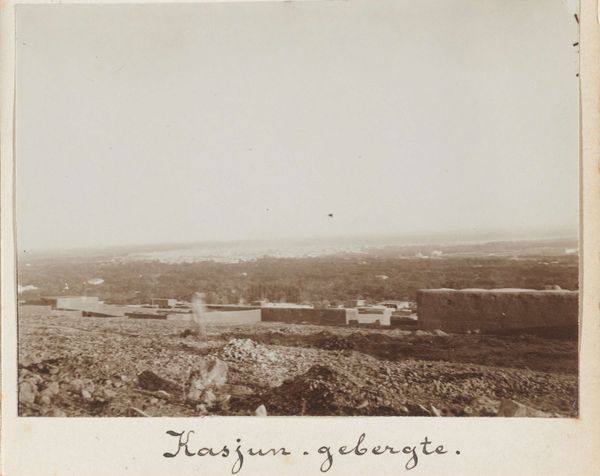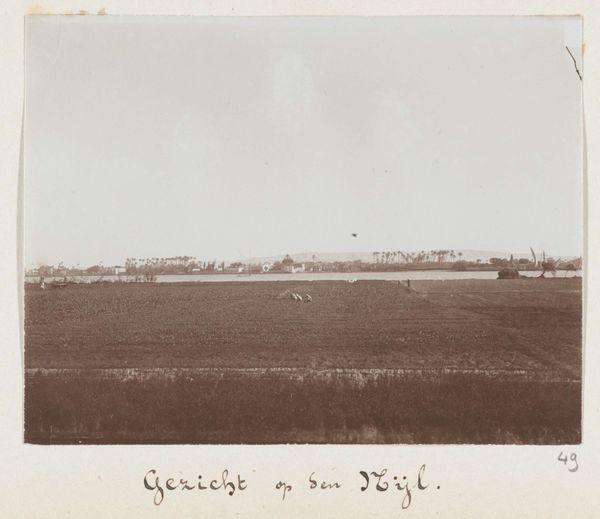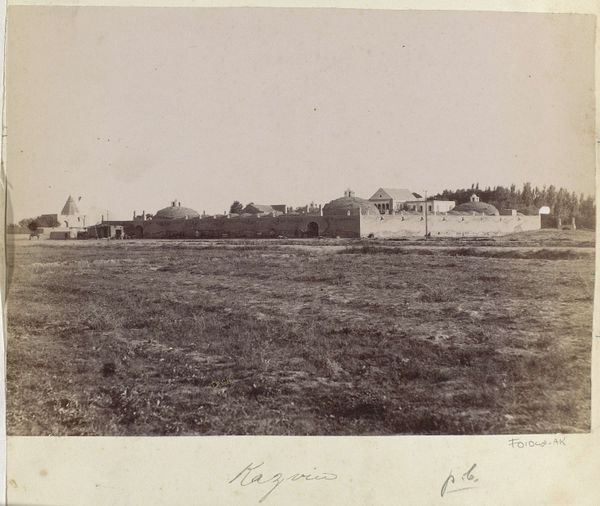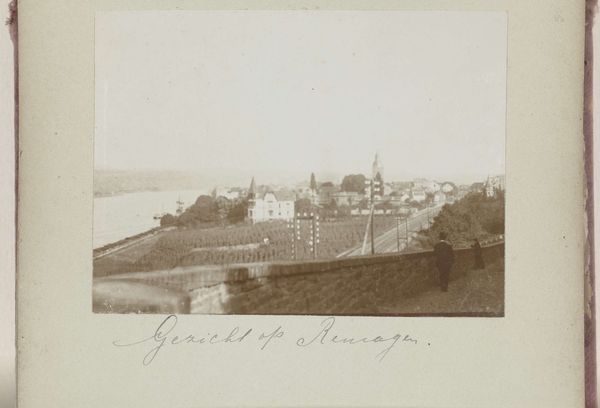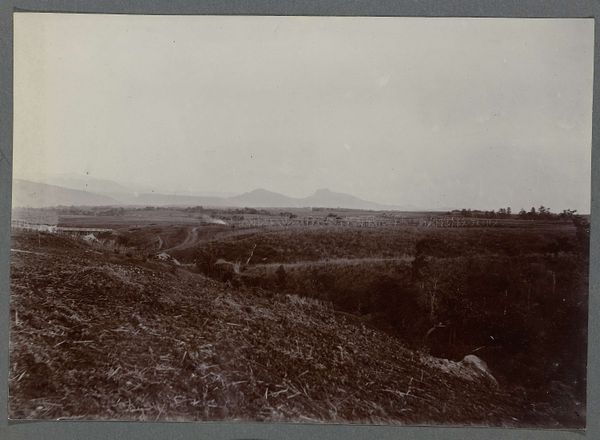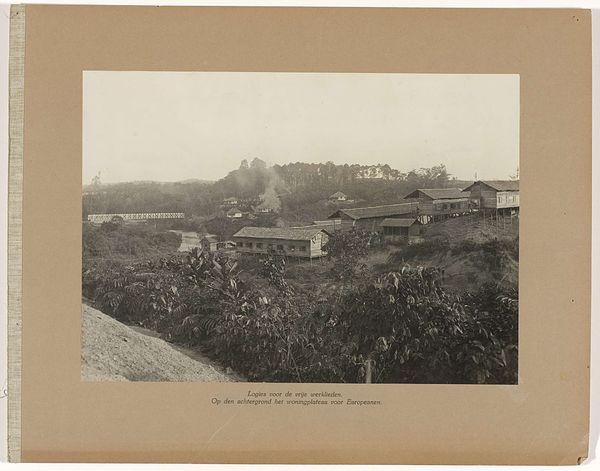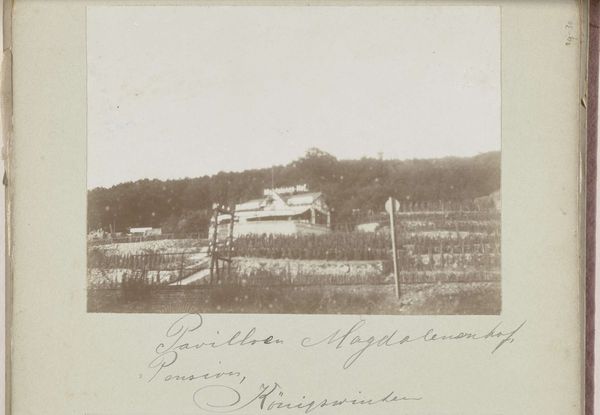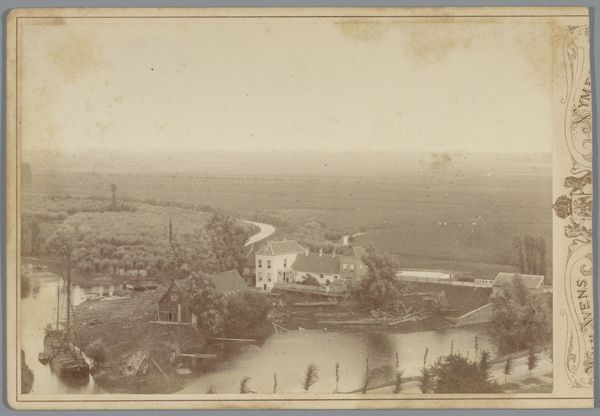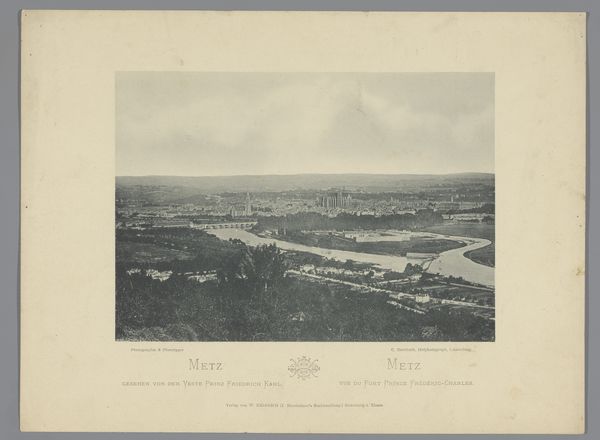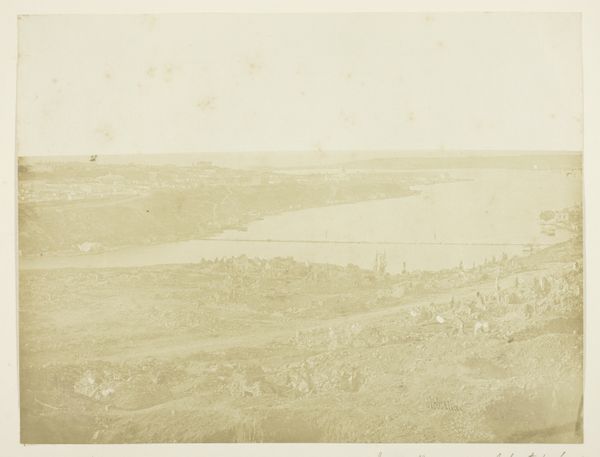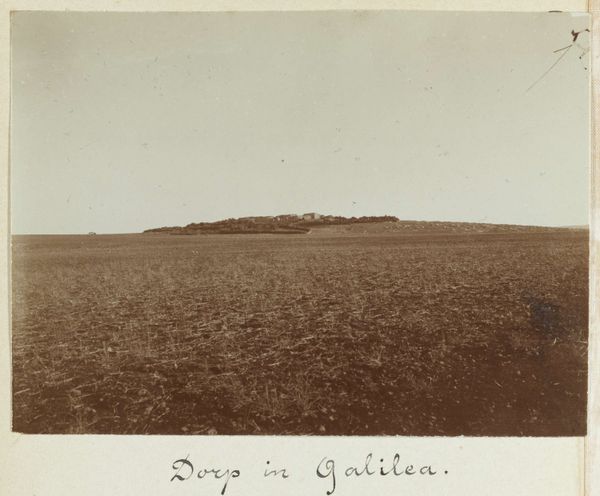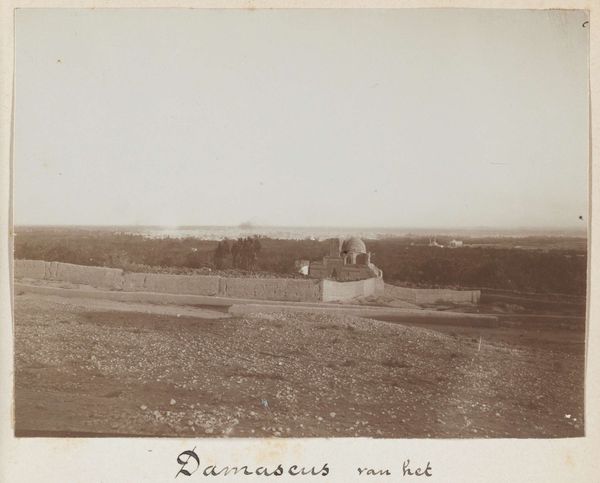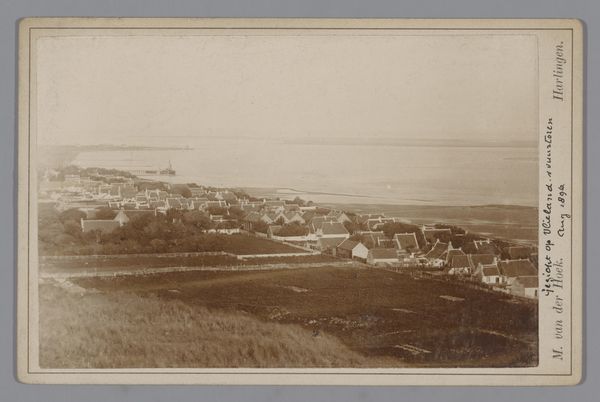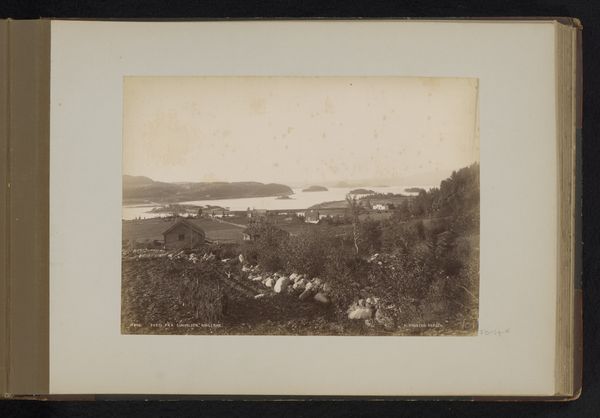
photography, gelatin-silver-print
#
water colours
#
landscape
#
photography
#
orientalism
#
gelatin-silver-print
#
cityscape
#
watercolor
Dimensions: height 84 mm, width 110 mm
Copyright: Rijks Museum: Open Domain
Editor: This photograph, titled "Gezicht op Damascus vanaf de Qasioun," was taken by Johannes Lodewijk Heldring in 1898. It's a gelatin-silver print, so an early form of photography. Looking at it, I am struck by how the landscape dominates and dwarfs the city, as though nature is quietly observing human activity. What do you see in this piece? Curator: It breathes, doesn't it? Like a sigh across time. I imagine Heldring up there, the air thin and clear, Damascus spread before him like an ancient secret whispered across the plains. It’s interesting that he chose photography – already developing as a powerful medium - to capture the “Orient,” a place so often painted with fantastical brushstrokes. Don't you find the sepia tones soften the harshness that a contemporary photograph might bring? Editor: I do, definitely. There's a nostalgic quality, almost romantic. The photographer gives us space to wander in our own minds. Do you think the photograph captures reality, or a western romantic vision of the East? Curator: Ah, that's the perennial question, isn't it? Probably both, swirling together like the dust in that distant city. He, like many others of his time, was drawn to the “exotic,” but the technology, the very chemical process, also grounds it in a certain truth. But look closer; the choice of vantage point, the soft focus… Doesn’t it all suggest a carefully constructed *impression* of reality? Maybe it's less about "truth" and more about the feeling it evokes. Editor: I hadn’t thought about the "constructed" aspect. This conversation is like having the image slowly develop in front of me, too. Curator: Precisely! And isn't that the beauty of art – it evolves with every gaze, every whispered interpretation.
Comments
No comments
Be the first to comment and join the conversation on the ultimate creative platform.
